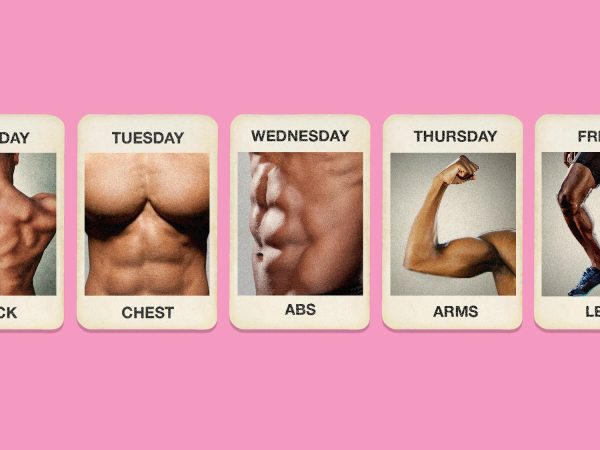Curious about the optimal duration for a workout? Well, wonder no more! We’re here to shed some light on the age-old question of “How long should a workout be?” Whether you’re a fitness fanatic or just starting on your fitness journey, finding the right amount of time to dedicate to your workout can be a puzzling task. But fear not, as we explore the ins and outs of workout durations, we’ll provide you with some useful tips to maximize your time and get the most out of every sweat session. Get ready to embark on a fitness adventure where the clock works in your favor!
Review contents
Factors to Consider
When determining the appropriate duration for a workout, there are several factors to consider. These factors will help tailor your exercise routine to your specific needs and goals, ensuring that you are getting the most out of your workouts.
Fitness Goals
The first factor to consider is your fitness goals. Are you looking to lose weight, build muscle, improve cardiovascular health, or simply maintain overall fitness? Each goal requires a different approach when it comes to workout duration. For example, if your goal is weight loss, you may need to incorporate longer cardio sessions into your routine. On the other hand, if your goal is to build muscle, shorter, more intense strength training sessions may be more effective.
Time Availability
Another important factor to consider is your time availability. With our increasingly busy lives, finding time to exercise can be a challenge. It is essential to be realistic about how much time you can dedicate to your workouts. If you have limited time, shorter, high-intensity workouts like HIIT (High-Intensity Interval Training) may be the best option for you. On the other hand, if you have more flexibility in your schedule, longer workouts incorporating various types of exercises may be suitable.
Exercise Intensity
The intensity of your workouts is also a crucial factor in determining the optimal duration. Higher intensity workouts, such as HIIT and strength training, typically require shorter durations due to their effectiveness in burning calories and building muscle. On the other hand, lower intensity workouts like steady-state cardio or yoga may require longer durations to achieve the desired results.
Fitness Level
Your current fitness level plays a significant role in determining the appropriate workout duration. Beginners may need to start with shorter workouts to avoid overexertion and allow their bodies to adapt to the increased physical activity. As your fitness level improves, you can gradually increase the duration and intensity of your workouts.
Types of Workouts
Now that we have considered the important factors, let’s explore the different types of workouts and their recommended durations.
Cardiovascular Exercise
Cardiovascular exercise, also known as aerobic exercise, is essential for improving cardiovascular health, burning calories, and increasing endurance. This type of exercise includes activities like running, cycling, swimming, and dancing. The recommended duration for cardiovascular exercise varies depending on factors such as fitness goals, intensity, and individual fitness level.
Strength Training
Strength training, also known as resistance training, focuses on building and strengthening muscles. It involves using weights, resistance bands, or bodyweight exercises to challenge your muscles and improve overall strength and tone. The recommended duration for strength training sessions depends on factors such as the number of exercises performed, the intensity of the workout, and the individual’s fitness goals.
HIIT
HIIT, or High-Intensity Interval Training, has gained popularity in recent years due to its time-efficient and effective nature. It involves alternating between short bursts of high-intensity exercises and brief recovery periods. HIIT workouts are typically shorter in duration but highly intense, making them a great option for those with limited time.
Yoga and Pilates
Yoga and Pilates focus on flexibility, core strength, and mind-body connection. These low-impact workouts are suitable for individuals of all fitness levels and can be tailored to meet specific goals, whether it is improving flexibility, increasing core strength, or reducing stress. The recommended duration for a yoga or Pilates session depends on the complexity of the poses, the pace of the class, and the individual’s goals.
Group Classes
Group fitness classes offer a fun and motivational workout environment. From dance fitness classes to boot camps to spin classes, there is a wide variety of options to choose from. The duration of group fitness classes can vary, but they typically range from 45 minutes to an hour. These classes provide a well-rounded workout that incorporates elements of cardio, strength training, and flexibility.
This image is property of media.gq.com.
Recommended Duration for Cardiovascular Exercise
Benefits of Cardiovascular Exercise
Cardiovascular exercise offers numerous benefits for both physical and mental health. Regular cardiovascular exercise can improve heart health, lower blood pressure, increase lung capacity, and reduce the risk of chronic diseases such as diabetes and obesity. It also helps boost mood, reduce stress, and improve sleep quality.
General Guidelines
The American Heart Association recommends at least 150 minutes of moderate-intensity cardiovascular exercise or 75 minutes of vigorous-intensity cardiovascular exercise per week. This can be spread out over several sessions, with each session lasting at least 10 minutes. Beginners may start with shorter durations and gradually increase the duration as their fitness level improves. It is essential to choose activities that you enjoy and that can be sustained over time to make cardiovascular exercise a regular part of your routine.
Recommended Duration for Strength Training
Benefits of Strength Training
Strength training offers a wide range of benefits, including increased muscle strength and tone, improved bone density, enhanced metabolism, and better overall body composition. It also plays a crucial role in preventing age-related muscle loss and maintaining independence as we age.
General Guidelines
The American College of Sports Medicine recommends performing strength training exercises for all major muscle groups at least two days a week. Depending on the number of exercises performed, the intensity of the workout, and the individual’s goals, strength training sessions can range from 20 minutes to an hour or more. It is important to allow for adequate rest between sets and to gradually increase the weight or resistance used as strength improves.
This image is property of i.ytimg.com.
Recommended Duration for HIIT
Benefits of HIIT
HIIT workouts offer a multitude of benefits, making them a popular choice for individuals with busy schedules. HIIT can help improve cardiovascular health, boost metabolism, burn calories, and increase muscle strength and endurance. It is also effective at reducing abdominal fat and improving insulin sensitivity.
General Guidelines
Due to the high intensity of HIIT workouts, they are typically shorter in duration, ranging from 20 to 30 minutes. The workout consists of short bursts of intense exercise followed by brief recovery periods. These workouts can be customized to individual fitness levels and goals by adjusting the duration of the exercise and recovery intervals. It is important to listen to your body and choose exercises that you can perform safely and effectively.
Recommended Duration for Yoga and Pilates
Benefits of Yoga and Pilates
Yoga and Pilates offer a unique combination of physical and mental benefits. These practices improve flexibility, strength, balance, and posture while promoting relaxation, stress reduction, and mental clarity. Regular yoga and Pilates practice can help alleviate muscle tension, improve breathing, and enhance overall well-being.
General Guidelines
The recommended duration for a yoga or Pilates session can vary depending on the style of practice and the individual’s goals. A typical yoga or Pilates class may last anywhere from 45 minutes to 90 minutes. However, shorter sessions of 15 to 30 minutes can still provide significant benefits, especially when practiced consistently. It is important to find a style and duration that suits your preferences and allows you to maintain a regular practice.
This image is property of www.muscleandfitness.com.
Recommended Duration for Group Classes
Benefits of Group Classes
Group fitness classes offer a fun and social exercise experience. By working out with others, you can stay motivated, challenge yourself, and enjoy a sense of camaraderie. Group classes often incorporate a combination of cardio, strength training, and flexibility exercises, providing a well-rounded workout. They are also led by qualified instructors who can guide and motivate participants to achieve their fitness goals.
General Guidelines
The duration of group fitness classes can vary depending on the type of class and the instructor’s preference. Most classes are typically 45 minutes to an hour long. However, some classes, such as spin or boot camp classes, may last longer. It is important to choose classes that align with your fitness goals and preferences. Additionally, participating in a variety of classes can help prevent exercise boredom and ensure a balanced workout routine.
Customizing Workouts
Each individual has unique preferences, needs, and goals when it comes to their workout routine. Customization allows for a more personalized approach and increases the likelihood of sticking to an exercise plan. Here are two ways to customize your workouts:
Splitting Workouts
If time is a constraint, consider splitting your workouts into shorter sessions throughout the day. For example, you can do 30 minutes of strength training in the morning and 30 minutes of cardiovascular exercise in the evening. This approach allows you to fit in your workout even on busy days and ensures that you are still getting the recommended duration for each type of exercise.
Adding Variation
To keep your workouts interesting and prevent plateaus, it is important to add variation to your routine. This can be achieved by changing the duration, intensity, or type of exercises you perform. For example, you can increase the duration of your cardio workouts once a week or incorporate different strength training exercises to target different muscle groups. Adding variation not only keeps you engaged but also challenges your body in new ways, leading to continued progress and better overall fitness.
This image is property of qph.cf2.quoracdn.net.
Monitoring Your Progress
Monitoring your progress is essential to ensure that your workouts are effective and to make any necessary adjustments to your routine. Here are two ways to monitor your progress:
Listening to Your Body
Pay attention to how your body feels during and after your workouts. If you consistently feel fatigued, sore, or overly exhausted, it may be a sign that you need to adjust the duration or intensity of your workouts. On the other hand, if you feel energized and motivated, it is a good indicator that your current routine is working well for you.
Measuring Performance
Tracking key performance indicators, such as the amount of weight lifted, the number of repetitions performed, or the distance covered, can help monitor progress over time. By setting specific goals and regularly assessing your performance, you can ensure that you are making progress towards your desired outcomes. This can also serve as a source of motivation and help you stay committed to your fitness journey.
Conclusion
The optimal duration for a workout depends on several factors, including fitness goals, time availability, exercise intensity, and fitness level. By considering these factors and exploring various types of workouts, you can design a personalized exercise routine that is both effective and enjoyable. Remember to listen to your body, monitor your progress, and make any necessary adjustments along the way. With a well-balanced and customized workout routine, you can achieve your fitness goals and maintain a healthy and active lifestyle.
This image is property of res.cloudinary.com.































